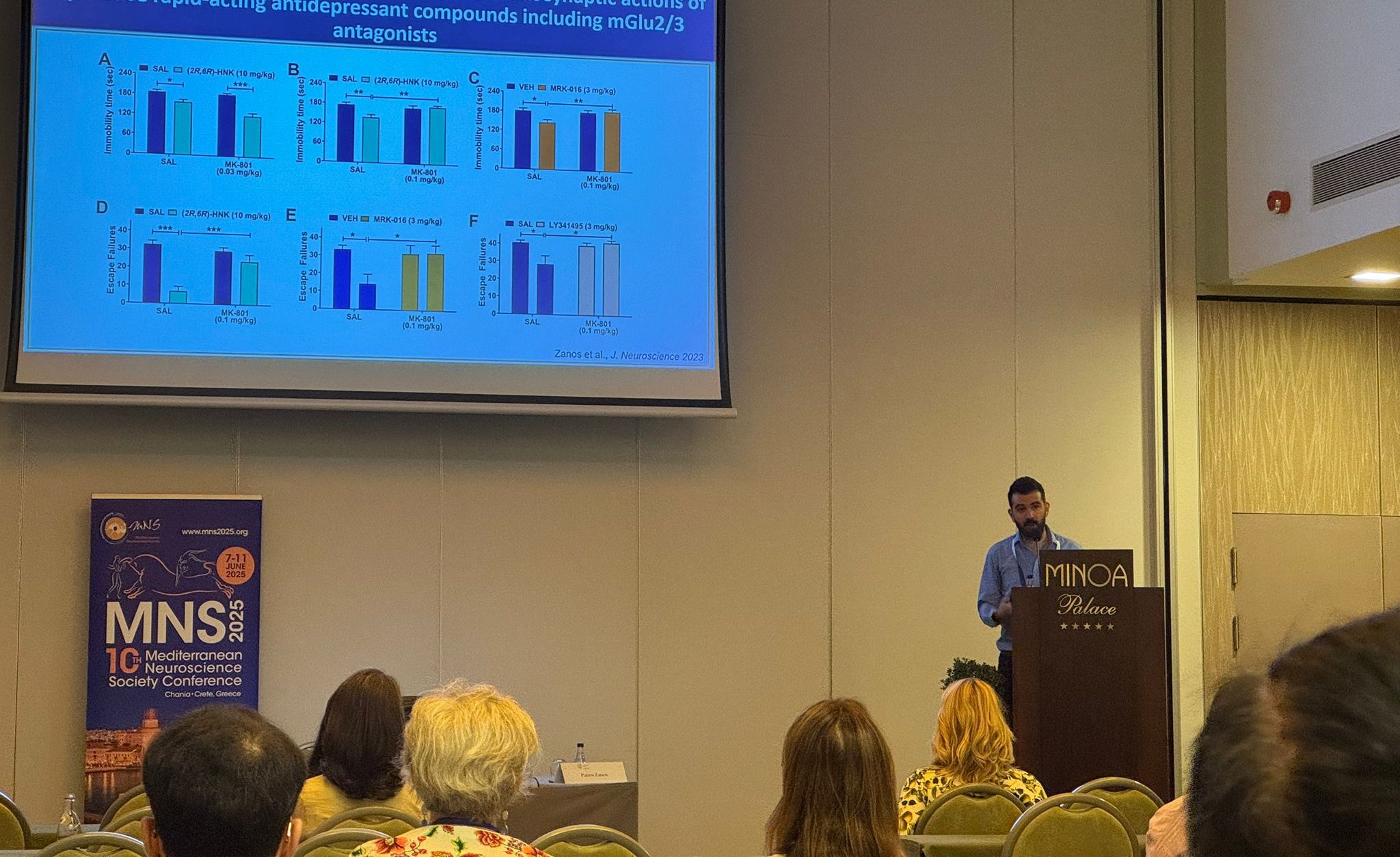
Dr. Panos Zanos represented our lab at the Mediterranean Neuroscience Society Conference in Crete, where he chaired a symposium on ketamine’s rapid antidepressant mechanisms. The symposium, titled “Unraveling ketamine’s rapid antidepressant mechanisms: From neural circuits to clinical implications,” brought together leading researchers from around the world to discuss cutting-edge findings on how ketamine works as an antidepressant.
Dr. Zanos presented our lab’s latest research on NMDA receptor activity and its role in ketamine’s rapid antidepressant effects. His presentation focused on how canonical NMDAR-dependent long-term potentiation is required for ketamine’s therapeutic efficacy, revealing an inverted U-shaped dose-response relationship that challenges simple NMDAR antagonism theories. The work demonstrates that excessive NMDA receptor inhibition may actually impede antidepressant properties, suggesting ketamine’s mechanisms are more complex than previously thought.
The symposium featured three other distinguished speakers who presented complementary research on corticotropin-releasing factor mechanisms, multi-omic approaches to understanding stress and ketamine interactions, and the complex relationship between ketamine and dopamine neurotransmission. Together, these presentations provided a comprehensive overview of the latest advances in understanding ketamine’s complex mechanisms of action, from molecular interactions to circuit-level effects.
